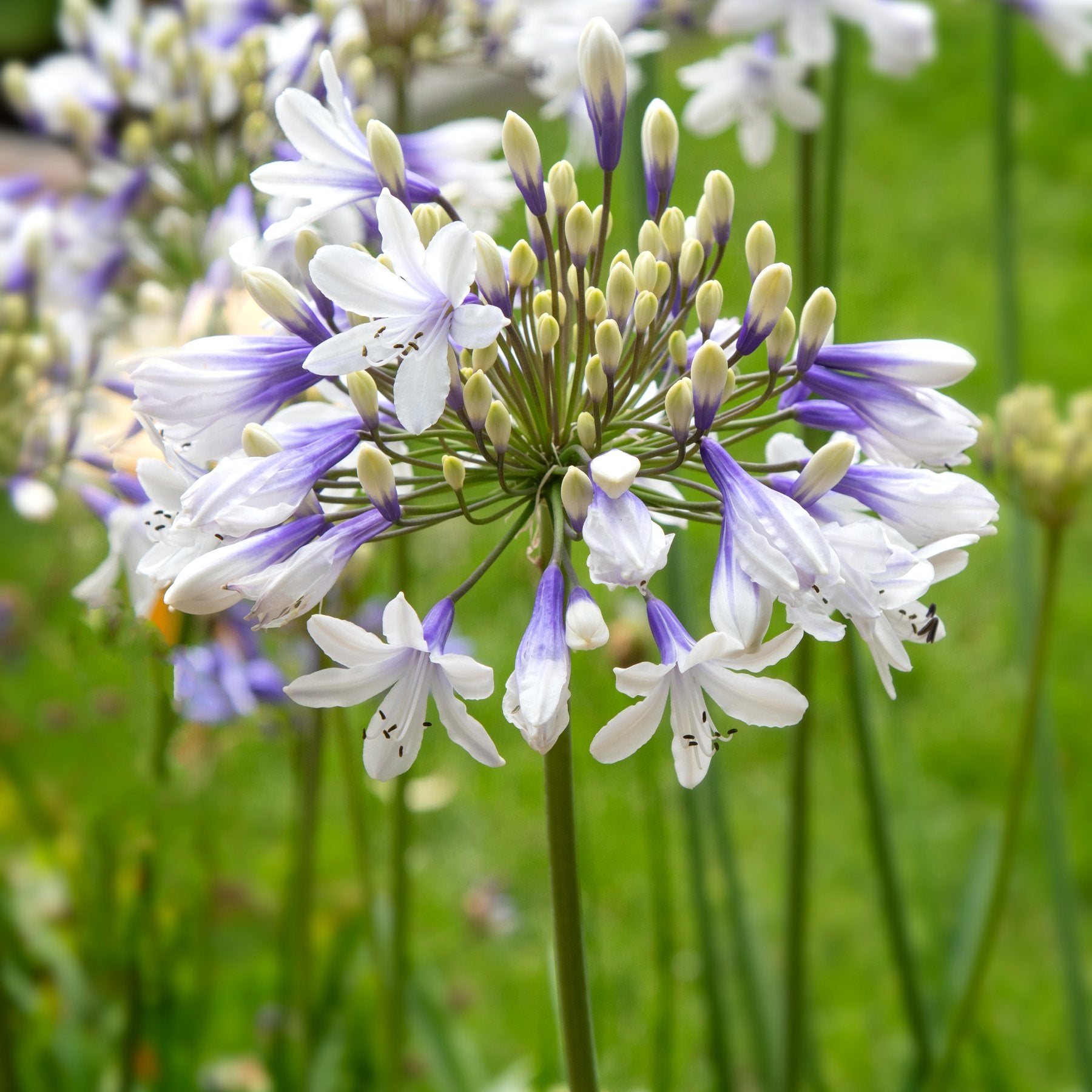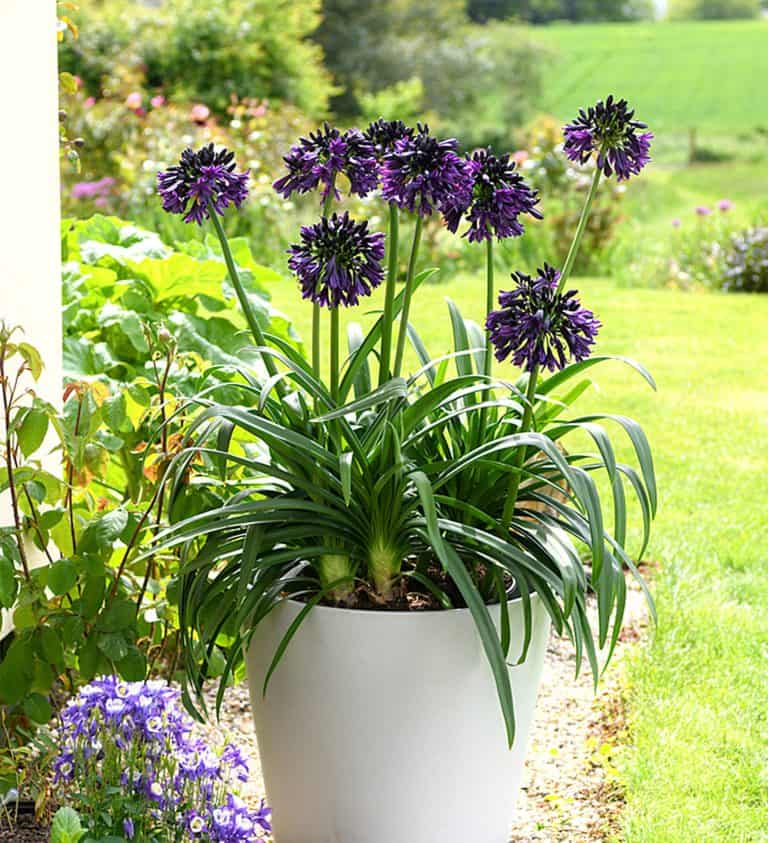Growing Agapanthus: A Full Overview to Beautiful Blooms
Growing Agapanthus: A Full Overview to Beautiful Blooms
Blog Article
Mastering the Art of Agapanthus Treatment: Essential Steps for Healthy Development and Dynamic Blooms
In the realm of horticulture, the growing of agapanthus stands as a gratifying endeavor for those who seek to nurture these stylish flowering plants. With their striking flowers and stylish foliage, agapanthus has actually captured the attention of garden enthusiasts worldwide. However, attaining ideal growth and vibrant blooms needs a nuanced method that includes various essential steps. From choosing the best selection to mastering pruning techniques, the journey in the direction of cultivating growing agapanthus plants is complex and holds the key to unlocking the complete potential of these agricultural gems.

Choosing the Right Agapanthus Variety

When selecting the ideal Agapanthus selection for your garden, take into consideration elements such as environment suitability, flower shade, and growth habit. Additionally, think about the climate in your area to make sure the Agapanthus selection you select can grow in your details problems. Recognizing the growth routine of various Agapanthus varieties is vital for appropriate positioning within your yard.
Ideal Planting Problems
Considering the optimum ecological demands is essential for successful Agapanthus growing. Agapanthus plants are sensitive to chilly temperature levels and should be safeguarded from frost throughout winter months.
To make sure healthy development and vibrant blooms, plant Agapanthus light bulbs at a depth of concerning 2-4 inches and area them 8-12 inches apart. Including raw material, such as garden compost, to the dirt can enhance water drainage and fertility, promoting durable root development. Mulching around the base of the plants assists preserve moisture and subdues weed development. Regular watering is important, especially during the expanding period, to maintain the soil consistently damp but not waterlogged.
Watering and Fertilizing Tips
Maintaining proper moisture levels and offering important nutrients are vital elements in the care regimen for Agapanthus plants. When it comes to watering Agapanthus, it is critical to strike a balance. These plants prefer regularly damp soil but are at risk to root rot if overwatered.
Feeding Agapanthus is necessary for promoting healthy and balanced development and prolific flowers. Use a balanced fertilizer, such as a 10-10-10 formula, in the early springtime as new growth arises. Repeat this application every 6-8 weeks throughout the expanding season. Avoid too much fertilization, as it can result in lavish vegetation at the expense of flowers. Always adhere to the maker's instructions for proper dilution and application approaches. By following these watering and fertilizing ideas, you can ensure your Agapanthus plants thrive and create lively, long-lasting flowers.
Trimming Techniques for Agapanthus
Pruning Agapanthus plants at the proper times and with proper strategies is essential for maintaining their wellness and advertising optimum development and blooming. The perfect time to prune Agapanthus is in late winter season or early springtime before brand-new development arises.
Deadheading invested blossoms can additionally reroute the plant's power right into producing even more blooms rather than establishing seeds. If you desire to collect seeds for proliferation, leave some blossoms to completely dry and mature on the plant.
Keep in mind to use tidy, sharp devices to make accurate cuts and reduce the threat of introducing diseases. Agapanthus. Routine trimming will certainly aid maintain your Agapanthus looking neat and healthy check this while making certain a plentiful display of attractive flowers
Dealing With Typical Pests and Illness
After making certain correct trimming strategies for Agapanthus, it is vital to attend to usual pests and diseases that can affect the health and vigor of these plants. One common bug that impacts Agapanthus is the Agapanthus gall midge.
Additionally, Agapanthus plants can experience from origin rot if they are grown in improperly draining pipes soil. By being alert and taking timely activity against illness and parasites, you can assist your Agapanthus plants prosper and create dynamic blooms. Agapanthus.

Verdict
In final thought, mastering the art of agapanthus care entails selecting the right range, giving excellent growing problems, correct watering and feeding, ideal trimming strategies, and dealing with common insects and conditions. By following these vital steps, you can make sure description healthy development and vivid blossoms for your agapanthus plants. Keep in mind to consistently check and preserve your plants to advertise their general well-being and longevity.
To make certain healthy and balanced development and dynamic blossoms, plant Agapanthus light bulbs read more at a deepness of concerning 2-4 inches and space them 8-12 inches apart. By complying with these watering and fertilizing tips, you can ensure your Agapanthus plants prosper and create lively, long-lasting flowers.
One typical bug that influences Agapanthus is the Agapanthus gall midget. In addition, Agapanthus plants can experience from root rot if they are grown in inadequately draining dirt. By adhering to these necessary steps, you can ensure healthy growth and dynamic blossoms for your agapanthus plants.
Report this page